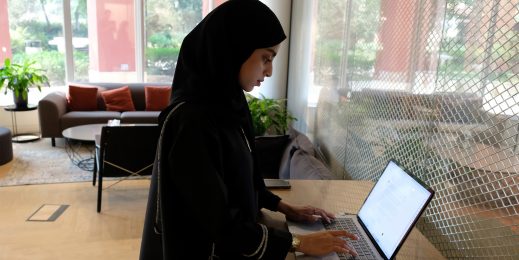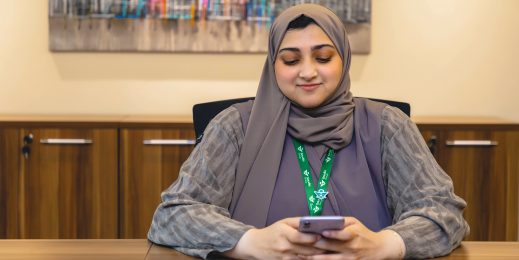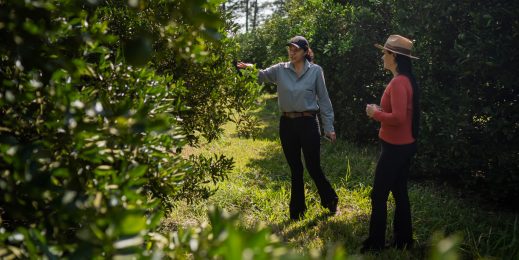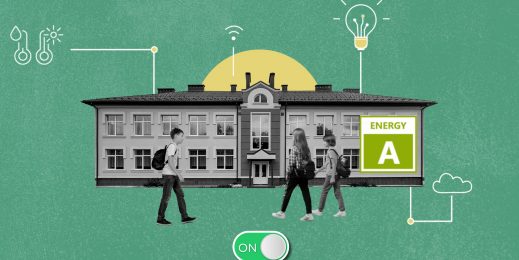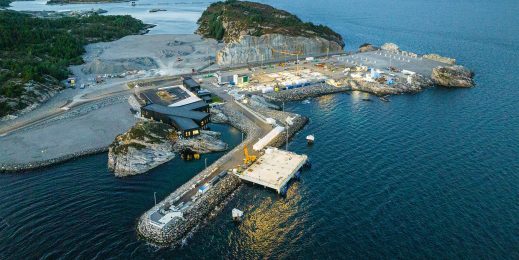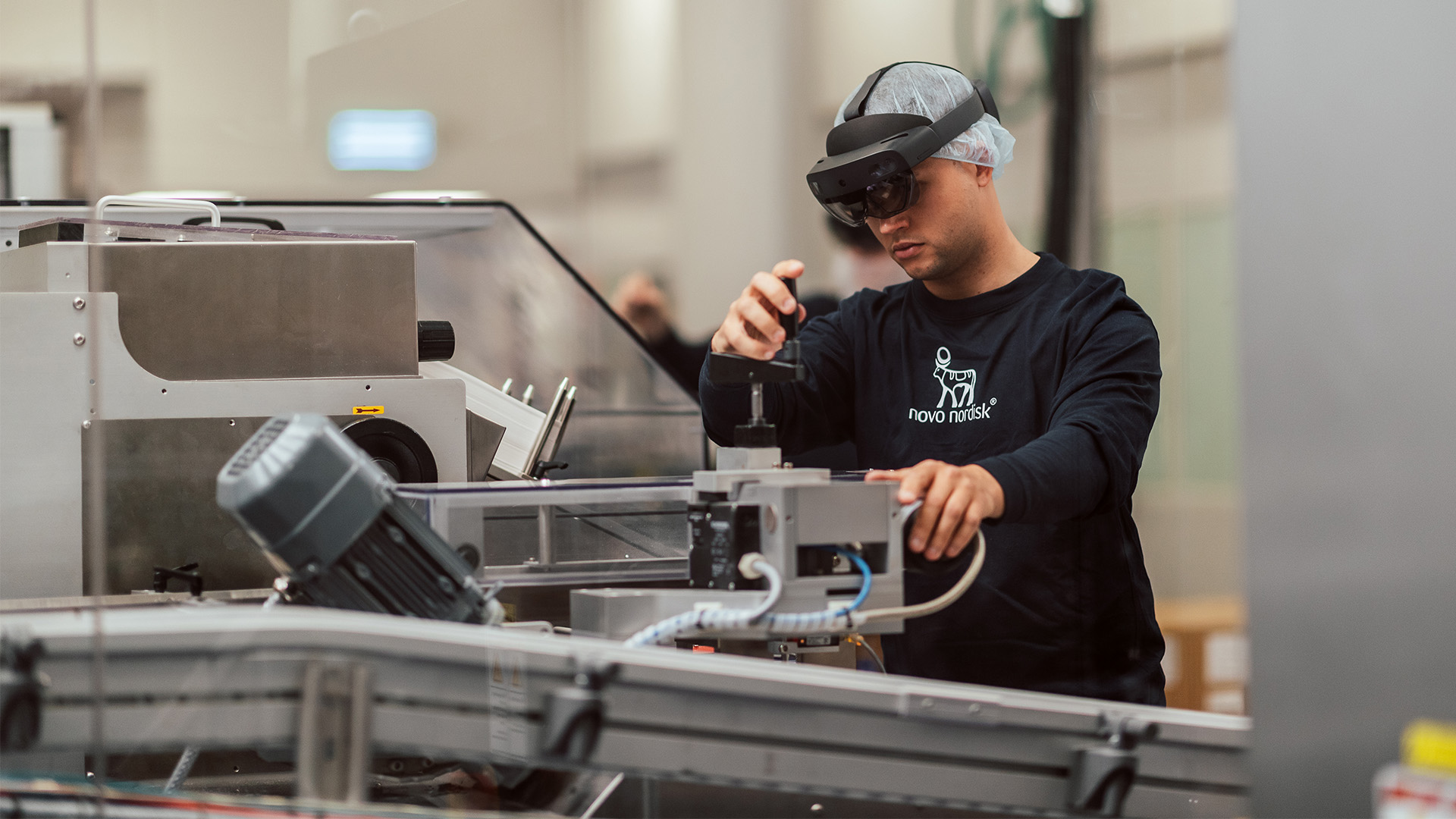
HoloLens 2 helps Novo Nordisk employees see work in new ways
Oliver Brask Pedersen figured his first day at work as a technician at Novo Nordisk would follow many of the familiar patterns – get introduced to new people, find out where the cafeteria is located and receive the basic instructions on his new job. But he was in for a surprise.
The pharmaceutical giant, a leader in the global production of diabetes medicine, has been pioneering the use of emerging digital technologies for everything from simplifying floor operations in their manufacturing facilities across the globe to conducting virtual site visits from thousands of miles away. Some of those solutions include Microsoft HoloLens 2, Microsoft Dynamics 365 Remote Assist, Microsoft Dynamics 365 Guides and Microsoft Power Platform.
This includes introducing what is known as augmented instructions, via HoloLens 2, to shop floor employees, providing them with new possibilities to support both process performance and getting onboarded for new procedures.
“I had no idea what it was,” Pedersen said of his first experience with the HoloLens 2. “Once I put it on, it felt natural, and you got used to it. I like getting my hands on things, that’s easier for me. And the HoloLens felt more hands-on than reading a piece of paper. For a first timer, it was a lot easier.”
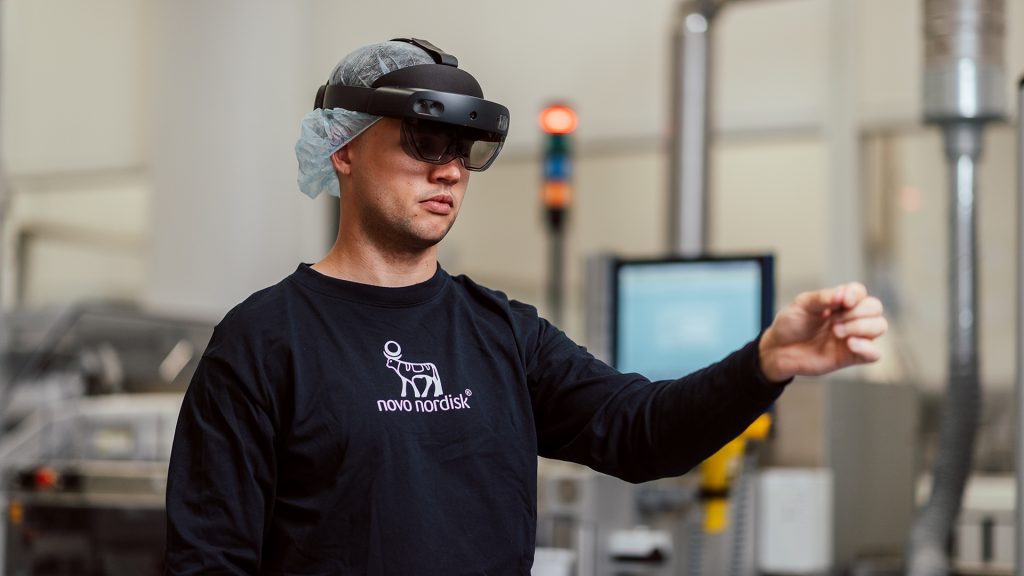
With more than 49,000 people in 80 offices and 17 manufacturing sites globally, Novo Nordisk is responsible for half of the world’s insulin supply, serving more than 34 million diabetics in 170 countries. The company’s production facilities are a whirlwind of activity, with lines constantly processing batches of medicine.
In the past, when changing a format at the production line where Pedersen works, for example, employees either had to read and remember the elaborate instructions or get help from a colleague, which could be time consuming.
“It’s a lot easier to teach people when you can show them the things they need to do,” Pedersen said.
Of course, pharmaceutical organizations always need to comply with authority requirements and regulations, which can often be quite complex. For Novo Nordisk, any technology solution must meet Good Manufacturing Practices (GMP), which are imposed by national health authorities on organizations producing medical products, such as drugs, medical devices and more.
Complying with these requirements ensures that processes are reliable and consistent, and employees have the appropriate qualifications and training. Novo Nordisk worked alongside Microsoft to make sure it could implement innovative approaches, such as using the HoloLens 2 while also following these regulations.
Embracing new technology
Using the HoloLens 2, technicians and operators, like Pedersen, can go through complex processes with the help of real-time, 3D instructions that have been specifically written and approved for HoloLens use. This helps to guarantee that every step has been completed successfully while allowing them to visualize their full work environment.
“Depending on the specific use case or instruction, you will be guided step by step,” Corporate Vice President of Product Supply Technology Transformation at Novo Nordisk, Ole Feddersen said. “It will say, ‘Loosen this bolt.’ ‘Turn this lever left.’ ‘Take this out and put a new one in.’ All the time there will be arrows pointing at what you need to do and where you need to go next, where to check, and so forth. You get a very intuitive execution throughout the operation while having both hands free.”
Implementing mixed reality has allowed Novo Nordisk and other forward-thinking companies to have more effective process performance and improved onboarding of employees to new processes while also maximizing the value of hybrid and remote work.
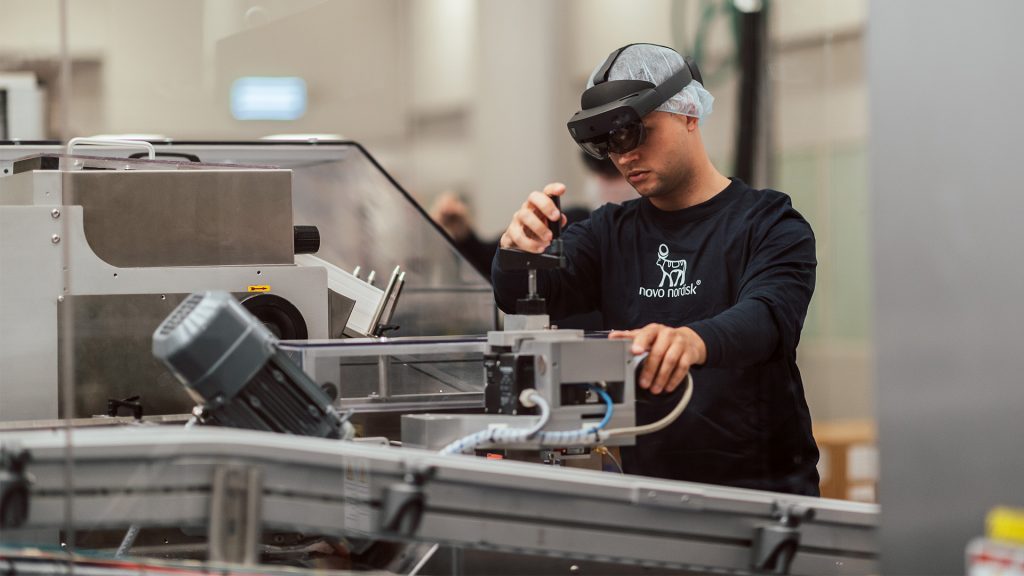
While the leap from analog to digital would seem to be jarring for long-time employees, Novo Nordisk has discovered that most workers have been eager to explore this new technology.
“It’s actually been a very positive experience,” Feddersen said. “We feared this could cause problems for some people and that some would even be afraid of it and reluctant to use it. But we’ve seen quite the opposite – that people on the shop floor in our factories have been very keen on trying this out and once they have tried it, found that it’s a fantastic help.”
With more than 1,000 employees interacting with HoloLens 2 technology during the pilot, Novo Nordisk has created gains in the consistency of the work being done and given employees a sense of innovation within their day-to-day jobs. Many Novo Nordisk employees enjoy being part of the company’s drive to transform the industry and feel empowered to assist in the process.
Alex Knudsen is another technician in the Oral Finished Product at Novo Nordisk. He has worked with the mixed-reality solution from the start of the pilot and has appreciated how line workers have been able to give their input on the augmented instructions to make them work more efficiently.
As the number of approved augmented instructions grows, there is also a global community that meets to share best practices and suggestions on how to improve the HoloLens 2 process.
“They’ve sought a lot of input from people who use the guides on a daily basis,” Knudsen said. “If we see something that could be optimized, we can work with our local experts and central team to change the augmented instructions.”
Another benefit of using the augmented instructions is that it has created a more flexible workplace. The use of augmented instructions enables newcomers to get started much faster on performing new processes.
“It’s all about improving performance consistency and gaining flexibility on the shop floor,” Senior Manager, Extended Reality and Digital Consulting at Novo Nordisk, Anne Kathrine Vejgaard said. “We’re making sure we do things right the first time. Some of the feedback we heard is that operators can now take on more complicated tasks, processes they weren’t able to do before. It makes the job more engaging for a lot of people.”
Remote Assist to the rescue
With production facilities across the world, travel can be a major bottleneck in certain situations. Instead of continuing to abide by traditional rules, Novo Nordisk began thinking about disrupting the standards and started using Remote Assist with the HoloLens 2 to create virtual site visits and discovered the process could get results without the time and hassle of travel.
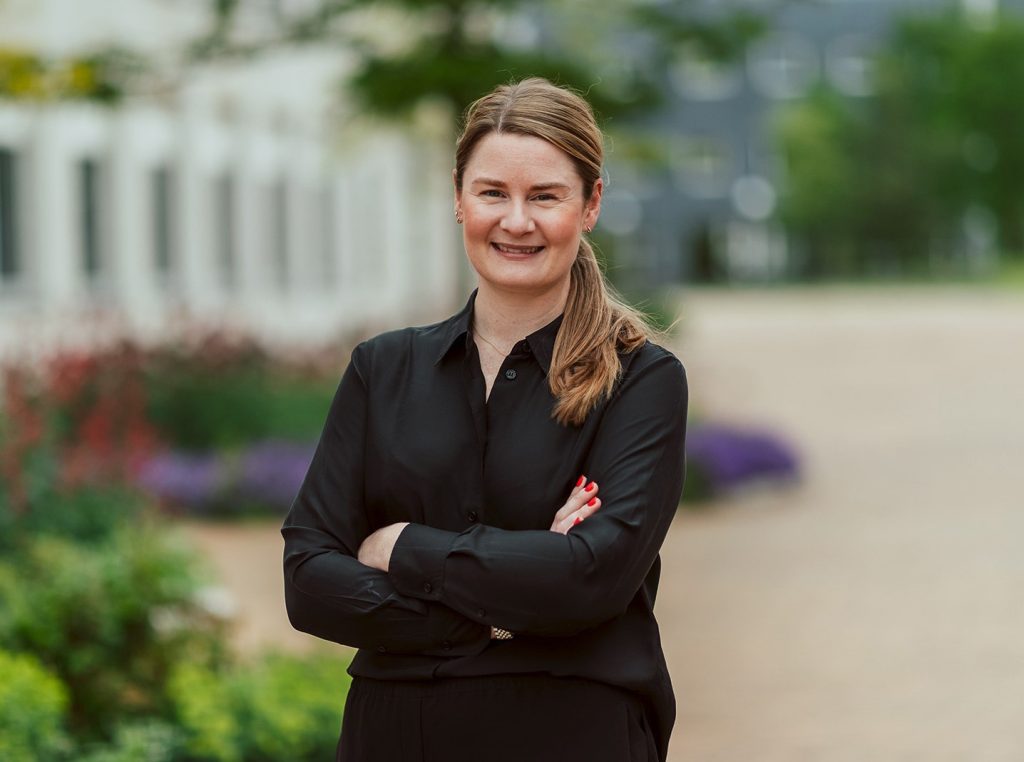
“We heard from many of our sites that in the beginning they were unsure about the experience using the HoloLens compared to standing next to your supplier. But now they see the benefit,” Vejgaard said. “Just imagine if you only needed four hours with somebody from Germany and you’re located in China. Let’s try out the HoloLens before considering travelling.”
On the production line, Remote Assist can also help things run smoothly. For Knudsen, an automation project stalled because the engineer couldn’t access the site in Denmark to help adjust the cobots (collaborative robots) used in the production. HoloLens 2 was able to help alleviate the issue.
“Instead of having to wait for the engineer to be able to gain access, we just put on the HoloLens and then accessed the program onsite,” Knudsen said. “He helped us make the changes that we needed. This is a very good option.”
As Novo Nordisk expands its use of technology throughout the company, the hope is to increase efficiency and production of critical medicine on a global scale to serve more patients and reduce the number of paper-based processes in use. Additionally, the company wants to take advantage of the tools to attract and hire more employees through digitization and automation.
“I think what is most exciting for the employees on the shop floor here is the way we can connect them to our manufacturing systems, so that they don’t have to go to a computer screen and they don’t have to go to another room,” Feddersen said. “They don’t have to go and read something. Information will come to them.”
“We can guide them now where we basically take them through a predefined process, but once we get further, and perhaps using other devices, we can dynamically tell people what to do. It will become a little bit like driving from A to B using GPS, where you don’t have to read the map up front and memorize the route. You will be told as the day goes along where to go next. Getting that kind of information to our people makes a big difference. That’s exciting.”
Top photo (GIF): Novo Nordisk employees are using the HoloLens 2 to support process performance and get onboarded for new activities.







